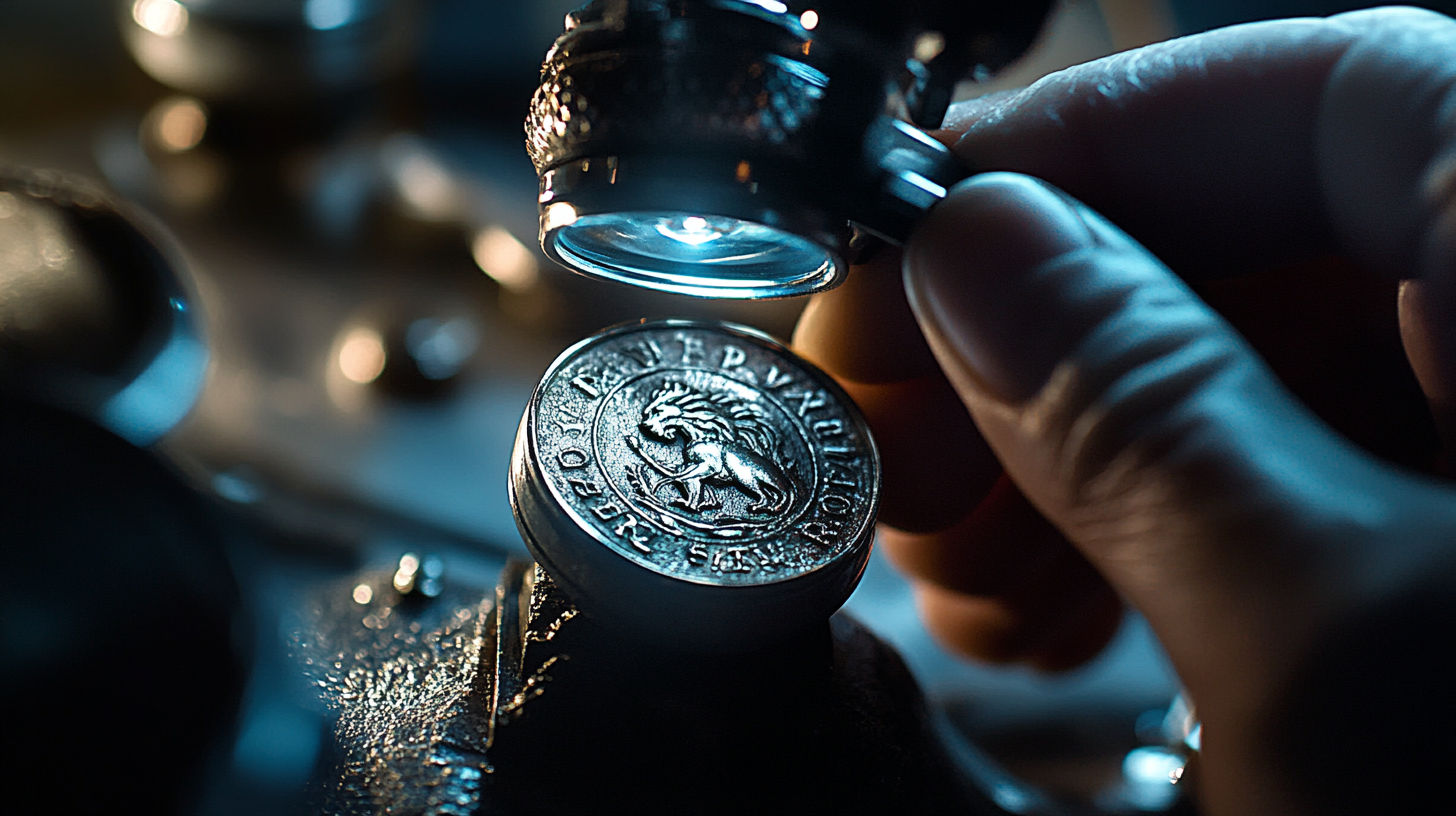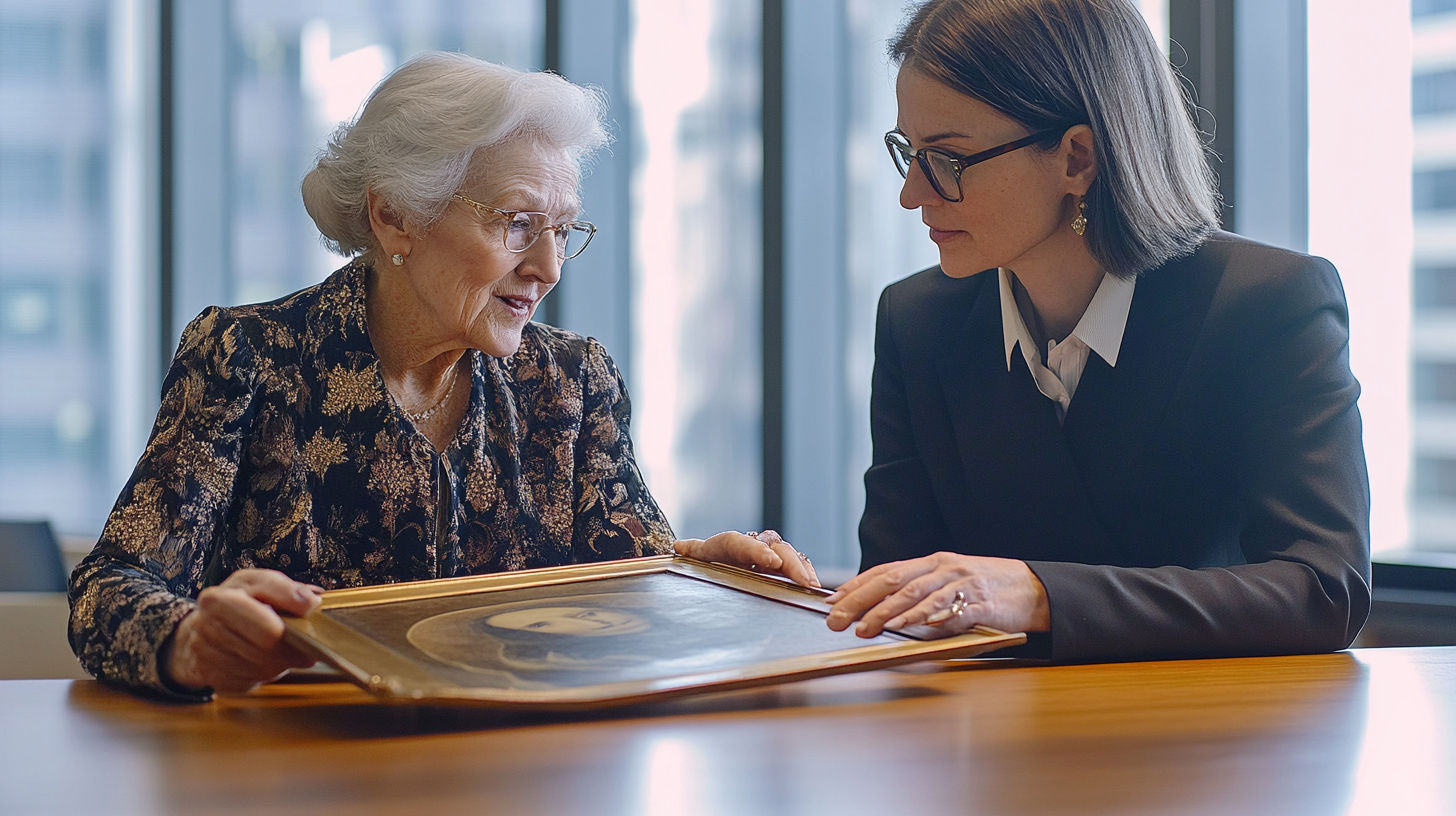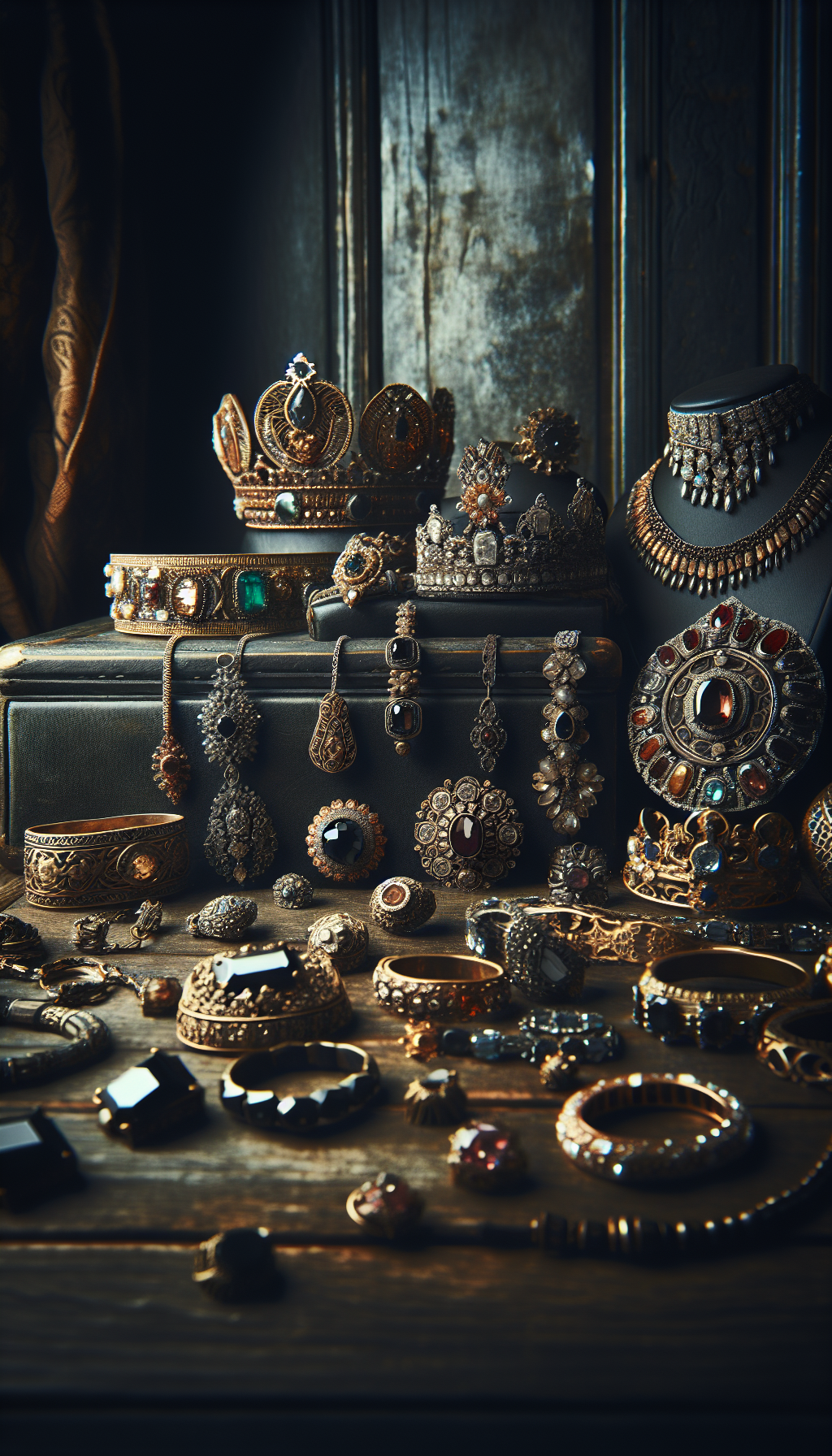Introduction to Antiques Appraisal
Antiques appraisal is the process of determining the value of older items that may hold historical, aesthetic, or monetary significance. Whether you’ve inherited a family heirloom, discovered a potential treasure at a garage sale, or simply want to understand the worth of your collection, a professional appraisal provides crucial information about your items’ value, authenticity, and historical context.
In this comprehensive guide, we’ll explore everything you need to know about antiques appraisal—from understanding the appraisal process and what affects an item’s value to finding reputable appraisers and preparing for your appraisal. We’ll also discuss various appraisal types, costs, and alternative valuation methods to help you make informed decisions about your valuable possessions.
What is an Antiques Appraisal?
A professional antiques appraisal goes beyond a simple estimate of value. According to Liberty Mutual, “A professional appraisal is a detailed written report provided by an appraiser who assesses the value of your items in relation to the marketplace.” This detailed report typically includes:
- A thorough description of the item
- Evaluation of condition and authenticity
- Research on provenance and historical context
- Current market value assessment
- Supporting documentation (photographs, comparable sales data)
- The appraiser’s credentials and signature
Antiques Appraisal Industry Insights
Types of Antiques Appraisals
Different situations call for different types of appraisals. Understanding the purpose of your appraisal is crucial for finding the right appraiser and receiving an accurate assessment.
Insurance Appraisals
Insurance appraisals determine replacement value—what it would cost to replace an item with one of similar quality and characteristics in today’s market. These appraisals typically represent the highest valuation and are used for:
- Obtaining proper insurance coverage
- Filing claims for damaged or stolen items
- Documenting valuable collections
Insurance companies often require professional appraisals for high-value items before providing coverage. According to insurance experts, items valued over $1,000-$2,000 typically warrant individual appraisals for adequate protection.
Estate and Inheritance Appraisals
When settling an estate or distributing inheritance, appraisals establish fair market value for:
- Estate tax purposes (IRS requirements)
- Equitable distribution among heirs
- Probate proceedings
- Charitable donation documentation
The IRS requires qualified appraisals for items valued over $5,000 that are included in an estate or donated to charity.
Fair Market Value Appraisals
Fair market value represents what a willing buyer would pay a willing seller when neither is under pressure to complete the transaction. These appraisals are used for:
- Estate planning
- Divorce settlements
- Tax purposes
- Charitable donations
Selling and Auction Appraisals
If you’re considering selling an antique, an auction house or dealer appraisal provides:
- Realistic selling price estimates
- Market demand assessment
- Recommendations for the best selling venue
- Reserve price guidance for auctions
Major auction houses like Christie’s offer complimentary auction estimates as a first step for potential consignors, with more detailed appraisals available for a fee.
The Antiques Appraisal Process
Initial Consultation
The appraisal process typically begins with an initial consultation where you:
- Describe your items and their known history
- Discuss the purpose of your appraisal (insurance, selling, estate planning)
- Review the appraiser’s qualifications and fee structure
- Schedule an examination appointment
Physical Examination
During the in-person examination, the appraiser will:
- Thoroughly inspect each item
- Take detailed photographs
- Look for maker’s marks, signatures, or identifying features
- Assess condition, noting any damage or repairs
- Measure dimensions and record physical characteristics
- Ask questions about provenance and history
For online appraisals, you’ll need to provide clear photographs from multiple angles and detailed descriptions.
Research and Valuation
After examining your items, the appraiser conducts research to determine value:
- Analyzing comparable sales data
- Consulting reference materials and price guides
- Checking auction records for similar items
- Consulting with specialists for unusual items
- Considering current market trends and demand
Written Report
The final deliverable is a written appraisal report that includes:
- Detailed descriptions of each item
- Photographs and measurements
- Statement of value with supporting evidence
- Purpose of the appraisal
- Date of valuation
- Appraiser’s qualifications and signature
A professional appraisal report should comply with the Uniform Standards of Professional Appraisal Practice (USPAP), which establishes ethical and performance standards for appraisers.
Prepare Your Items for Appraisal
Use this checklist to ensure your antiques are ready for professional appraisal
- Clean items gently without harsh chemicals
- Gather any documentation of provenance or history
- Locate original receipts or prior appraisals if available
- Take preliminary photos of items from multiple angles
- Make a list of any known repairs or restoration work
- Research maker's marks or signatures in advance
- Prepare a list of questions for the appraiser
Factors That Affect Antique Value
Age and Rarity
While age alone doesn’t guarantee value, it’s an important consideration:
- Items over 100 years old are generally considered true antiques
- Rarity significantly impacts value—limited production items command higher prices
- Survival rate affects rarity (how many examples still exist)
Condition
Condition is often the most critical factor affecting value:
- Original, unrestored condition is typically preferred for most antiques
- Previous repairs or alterations can significantly decrease value
- Signs of appropriate age (patina) are desirable, while damage is not
- Original finish, hardware, and components increase value
Provenance and History
An item’s history and documentation can dramatically increase its value:
- Previous notable ownership (celebrities, historical figures)
- Documentation proving authenticity or origin
- Historical significance or connection to important events
- Continuous ownership history (chain of custody)
As Dr. Lori, a renowned antiques appraiser from the History Channel, notes: “Provenance can sometimes double or triple the value of an antique by confirming its authenticity and connecting it to historical events or important people.”
Quality and Craftsmanship
Superior craftsmanship commands higher values:
- Skilled handwork versus mass production
- Quality of materials used
- Innovative or unique design elements
- Maker’s reputation and significance
Market Demand and Trends
Current market conditions heavily influence valuation:
- Collector interest and demographic shifts
- Design trends and interior decorating styles
- Media influence (TV shows like Antiques Roadshow)
- Regional preferences and international market demand
Appraisal Service Costs
Average costs for professional antiques appraisal services (2023)
</tbody>
</table>
Finding a Qualified Antiques Appraiser

Professional Qualifications to Look For
When selecting an appraiser, look for proper credentials and specialization:
Membership in professional organizations:
- International Society of Appraisers (ISA)
- American Society of Appraisers (ASA)
- Appraisers Association of America (AAA)
Specialized knowledge in your item’s category
USPAP compliance and certification
Relevant education and continuing professional development
Years of experience in the specific field
According to Yelp reviews for appraisers like Molchany Antiques & Appraisals, clients emphasize the importance of honesty and expertise: “Carole is the most honest and competent antiques appraiser in Nevada. She answers all questions in a forthright manner and is very knowledgeable on every subject.”
Where to Find Reputable Appraisers
Several resources can help you locate qualified appraisers:
Professional Association Directories
- Search the ISA, ASA, or AAA member directories
- Filter by specialty and location
Auction Houses and Museums
- Major auction houses like Heritage Auctions offer appraisal services
- Museum curators can often recommend specialists
Local Resources
- Antique dealer associations
- Historical societies
- Estate attorneys and insurance agents
Online Directories
- Antiques.com offers regional appraiser listings
- PBS Antiques Roadshow provides resources and expert connections
Questions to Ask Before Hiring
Before engaging an appraiser, ask these important questions:
- What are your qualifications and specialty areas?
- How many years have you been appraising similar items?
- Are you USPAP compliant and certified?
- Do you have any conflicts of interest (do you also buy/sell antiques)?
- How do you determine values and what reference materials do you use?
- What does your appraisal report include?
- What are your fees and how are they structured?
- How long will the appraisal process take?
- Can you provide references from previous clients?

Online vs. In-Person Appraisals
Online Appraisal Services
Online appraisal services like ValueMyStuff provide convenient, often less expensive alternatives to traditional in-person appraisals.
Advantages:
- Lower cost (typically $28-$150)
- Quick turnaround (24-48 hours for many services)
- Access to international experts
- Convenient for immobile or remote items
- Good for initial value estimates
Limitations:
- Cannot physically examine the item
- May miss subtle condition issues or authentication details
- Often not accepted for insurance or legal purposes
- Limited to what can be seen in photographs
- May not include the same level of detail as formal appraisals
How Online Appraisals Work:
- Upload clear photos from multiple angles
- Provide detailed descriptions and measurements
- Include any known history or provenance
- Pay the required fee
- Receive a digital appraisal report within the promised timeframe
In-Person Professional Appraisals
Traditional in-person appraisals remain the gold standard for formal valuations.
Advantages:
- Direct physical examination of items
- Better authentication and condition assessment
- Appropriate for legal, insurance, and tax purposes
- More comprehensive documentation
- Opportunity for direct questions and discussion
- Higher credibility for high-value items
Limitations:
- Higher cost (starting at $250-$350 for a single item)
- May require transportation of items
- Scheduling constraints
- Longer timeframe for completed reports
Choosing the Right Option
Consider these factors when deciding between online and in-person appraisals:
- Purpose of appraisal: Insurance and legal purposes typically require formal in-person appraisals
- Item value: Higher-value items warrant more thorough in-person assessment
- Complexity and rarity: Unusual or particularly rare items benefit from direct examination
- Budget constraints: Online options provide more affordable preliminary estimates
- Time sensitivity: Online services typically offer faster turnaround times
Evolution of Antiques Appraisal Methods
- Pre-1950s
Connoisseurship Era
Appraisals relied heavily on individual expertise and subjective judgment. Value was determined primarily through the appraiser's personal knowledge and experience with minimal formal methodology. - 1950s-1970s
Market Comparison Approach
Appraisers began using more systematic market comparisons, referring to auction records and price guides to establish values. Antiques Roadshow launched in the UK in 1979, bringing appraisal methods to public awareness. - 1980s-1990s
Professional Standards Development
Formation of professional organizations and establishment of Uniform Standards of Professional Appraisal Practice (USPAP) created more rigorous methodology and ethical guidelines. - 2000s-2010s
Digital Database Revolution
Online auction records, price databases, and digital reference materials transformed research capabilities. Authentication techniques became more scientific with advanced technology. - 2015-Present
Virtual Appraisal Age
Remote digital appraisals and AI-assisted valuation tools emerged, offering more accessible options. Blockchain technology began being used for provenance tracking and authentication.
DIY Antique Valuation Methods
Researching Comparable Sales
One of the most effective DIY methods is researching recent sales of similar items:
Auction Records
- Check completed listings on eBay, LiveAuctioneers, and Invaluable
- Review major auction house archives (Christie’s, Sotheby’s, Heritage)
- Note condition, provenance, and special features that affected price
Price Guides and Reference Books
- Consult specialized guides for your item category
- Check publication dates (more recent is better)
- Understand that listed values may not reflect current market conditions
Online Price Databases
- Subscription services like Worthpoint and Prices4Antiques
- Free resources like TIAS.com and Kovels.com
- Online museum collection databases for similar examples
Digital Identification Tools
Several digital tools can help with preliminary identification:
Mobile Apps
- Visual recognition apps like RelicSnap and Google Lens
- Price guide apps for specific categories
Online Communities
- Specialty forums for collector feedback
- Reddit communities like r/Antiques and r/WhatIsThisThing
- Facebook groups dedicated to specific collectibles
Reverse Image Search
- Upload photos to Google Images to find similar items
- Use TinEye or other visual search engines
Antique Shows and Dealer Consultations
Visiting shows and consulting with dealers provides hands-on learning:
Antique Shows and Fairs
- Observe similar items and their asking prices
- Talk to dealers about market trends
- Compare condition and quality across examples
Antique Shops
- Build relationships with knowledgeable dealers
- Ask for informal opinions (with appropriate expectations)
- Compare your items to priced merchandise
Limitations of DIY Methods
It’s important to understand the limitations of self-assessment:
- Authentication challenges without proper training and tools
- Difficulty in objectively assessing condition
- Inability to access comprehensive sales databases
- No legal standing for insurance or tax purposes
- Potential for overlooking significant details or history
As the PBS Antiques Roadshow notes: “Value can change: The value of an item is dependent upon many things, including the condition of the object itself, trends in the market for that kind of object, and the location where the item will be sold.”
Notable Antique Auction Results (2022-2023)
Recent high-profile antique sales that demonstrate market values
| Category | Price | Notes |
|---|---|---|
| Single Item Appraisal | $250-$350 | Written report for one item |
| Additional Items | $25-$100 each | Incremental cost per additional item |
| Hourly Appraisal Services | $150-$300/hour | For larger collections or estates |
| Online Appraisals | $28-$150 | Digital assessments with photos |
| Verbal Consultations | $75-$150 | No written report provided |
</tbody>
</table>
Preparing for Your Antiques Appraisal
Documentation and History
Gather all available information about your items:
Provenance Documentation
- Original receipts or bills of sale
- Letters or documents mentioning the item
- Previous appraisals or insurance records
- Family histories or stories associated with the piece
- Photographs showing the item in historical contexts
Maker Information
- Signatures, marks, or labels
- Manufacturing details if known
- Artist or craftsman information
- Place of origin documentation
Ownership History
- Chain of ownership records
- Inheritance documentation
- Purchase information and dates
Physical Preparation
Prepare the items themselves carefully:
Gentle Cleaning
- Remove surface dust with appropriate tools
- Do NOT polish, refinish, or repair items before appraisal
- Avoid harsh cleaning methods that could damage patina
- Do not take apart or disassemble components
Gather Components
- Locate all original parts and accessories
- Find original packaging if available
- Assemble matching sets completely
Documentation of Damage
- Note any existing damage or repairs
- Document previous restoration work
- Be honest about condition issues
Logistical Preparation
Plan the practical aspects of your appraisal:
Appointment Planning
- Schedule ample time for thorough examination
- Arrange for proper transportation if needed
- Consider location requirements (lighting, space)
- Prepare a list of items in advance
Fee Understanding
- Get a clear quote for services
- Understand what the appraisal report will include
- Know the timeline for receiving the completed appraisal
- Discuss any additional costs that might arise
Security Considerations
- Arrange proper insurance for transportation
- Consider security for high-value items
- Document condition before transport
Questions to Prepare
Develop a list of specific questions for your appraiser:
- Questions about the items’ age and origin
- Inquiries about potential restoration needs
- Storage and preservation recommendations
- Market trend insights for similar items
- Selling recommendations if applicable
- Insurance value versus market value explanation
- Authentication concerns or verification methods
Essential Antiques Appraisal Resources
Antiques Roadshow Appraisals
PBS Antiques Roadshow's online appraisal archive contains thousands of expert valuations across numerous categories, serving as an excellent reference point for comparable items.
Heritage Auctions Free Appraisals
One of the world's largest auction houses offers preliminary online appraisals by uploading photos of your collectibles to their expert team for auction consideration.
International Society of Appraisers
Search this professional directory to find qualified, credentialed appraisers specializing in specific antique categories in your geographic area.
Dr. Lori Antiques Appraisal Services
History Channel's antiques expert Dr. Lori offers online appraisal services, educational resources, and in-person appraisal events across the country.
ValueMyStuff Online Appraisals
This online appraisal platform connects users with over 60 experts from major auction houses, providing digital valuations within 24-48 hours at affordable rates.
Christie's Auction Estimates
Christie's offers complimentary auction estimates for items being considered for consignment, with access to their world-renowned specialists.
Antiques.com Appraiser Directory
Comprehensive directory of antique appraisers searchable by location, specialty, and services offered across the United States.
Appraisers Association of America
Professional association offering a searchable database of certified appraisers with verified credentials and specialties.
Common Antiques Appraisal Mistakes to Avoid
Selecting the Wrong Type of Appraiser
One of the most common mistakes is choosing an appraiser without the right specialization:
- Using a generalist for specialized items: Fine art, jewelry, rare books, and other specialty categories require specific expertise
- Confusing dealers with appraisers: Dealers may have conflicts of interest when providing valuations
- Assuming all professional credentials are equal: Different appraiser certifications have varying requirements and specialties
Restoration Before Appraisal
Many people mistakenly try to “improve” items before appraisal:
- Polishing or cleaning antique metals: Removes valuable patina and can reduce value
- Refinishing furniture: Original finish is highly valued; refinishing often decreases worth
- Amateur repairs: Unprofessional repairs can permanently damage items
- Replacing parts: Original components, even if damaged, are preferable to replacements
Misunderstanding Value Types
Different types of value serve different purposes:
- Confusing replacement value with market value: Insurance appraisals typically reflect replacement cost, which is often higher than market value
- Mixing up retail and wholesale prices: Retail prices are higher than wholesale or auction values
- Overreliance on price guides: Published values may be outdated or reflect idealized conditions
- Expecting selling price to match appraised value: Selling costs, market fluctuations, and buyer availability affect realized prices
Documentation Failures
Inadequate documentation undermines appraisal accuracy:
- Neglecting to share provenance information: History and documentation significantly impact value
- Not mentioning known repairs or alterations: Transparency about condition is essential
- Failing to document sets completely: Individual pieces from sets may be valued differently than complete sets
- Not preserving the appraisal report properly: Digital and physical copies should be maintained securely
DIY Appraisal Limitations
Self-appraisal attempts often fall short:
- Overvaluing based on emotional attachment: Personal connections don’t translate to market value
- Relying solely on online research: Internet information may be incomplete or inaccurate
- Using outdated resources: Market values change rapidly for many categories
- Inability to authenticate properly: Professional authentication requires specialized knowledge and tools
Legal and Ethical Misunderstandings
Appraisals have legal and ethical dimensions:
- Using informal appraisals for legal purposes: Tax authorities and courts require formal, USPAP-compliant appraisals
- Not disclosing the appraisal purpose: Different purposes may require different valuation approaches
- Seeking appraisals with predetermined values: Requesting artificially high or low valuations constitutes fraud
- Failing to update appraisals periodically: Values change over time; insurance appraisals should be updated every 3-5 years
Frequently Asked Questions About Antiques Appraisal
How much does it cost to get antiques appraised?
Professional antiques appraisal costs vary based on the appraiser's expertise, your location, and the type of appraisal needed. Typically, formal written appraisals for a single item start at $250 to $350, with additional items adding $25 to $100 each.Hourly rates for appraisers typically range from $150 to $300 per hour, which is more economical for larger collections. Online appraisal services are more affordable, with prices starting around $28 per item, though these may not be suitable for insurance or legal purposes.
Verbal consultations, which don’t include written reports, are generally less expensive at $75-$150 but provide no documentation for insurance or tax purposes.
How do I get my antiques valued?
There are several approaches to getting your antiques valued:
Professional Appraisal: Hire a certified appraiser specializing in your item category for the most accurate and credible valuation.
Auction House Evaluations: Many auction houses like Christie’s and Heritage Auctions offer free evaluations for items they might potentially sell.
Online Appraisal Services: Services like ValueMyStuff connect you with experts who provide valuations based on photographs and descriptions.
Antique Dealer Consultations: Local antique dealers may offer informal valuations, though these often reflect what they would pay (wholesale value) rather than retail value.
Research Comparable Sales: Check auction records, online marketplaces, and price guides to find similar items that have sold recently.
Antique Shows and Events: Some shows feature appraisal booths where experts provide quick verbal assessments for nominal fees.
The best approach depends on your purpose—insurance and legal matters require formal professional appraisals, while curiosity or preliminary selling research might be satisfied with less formal methods.
Is there an app to identify and value antiques?
Yes, several apps help identify and provide preliminary values for antiques:
RelicSnap: Uses image recognition to identify antiques and provide estimated values based on similar items.
Google Lens: While not specifically for antiques, this visual search tool can help identify objects and find similar items online.
WorthPoint: Provides access to a vast database of sold antiques with verification of marks, signatures, and values.
Mearto: Offers quick preliminary valuations and connections to professional appraisers.
JustCollecting: Focuses on collectibles with price guides and valuation tools.
These apps can be helpful starting points, but they have limitations. They may struggle with unique items, can’t physically examine condition, and often can’t authenticate items properly. For valuable antiques or important decisions, these apps should supplement rather than replace professional appraisals.
How often should I get my antiques appraised?
The frequency of antique appraisals depends on several factors:
Insurance Requirements: Many insurance policies require updated appraisals every 3-5 years for scheduled items.
Market Volatility: Categories with rapidly changing values (like contemporary art or certain collectibles) may need more frequent appraisals.
Major Market Events: Significant events affecting your items’ category (museum exhibitions, auction records, deaths of artists) may warrant reappraisal.
Condition Changes: Items that have been restored, damaged, or significantly altered should be reappraised.
Estate Planning Updates: Review appraisals when updating wills or estate plans, typically every 5 years.
For stable categories of antiques in unchanging condition, every 5 years is generally sufficient. However, high-value items or those in volatile markets may benefit from more frequent reviews.
Can I get antiques appraised online for free?
While truly comprehensive professional appraisals typically require payment, several options exist for free preliminary assessments:
Auction House Evaluations: Major auction houses like Heritage Auctions offer free evaluations for items they might potentially sell at auction.
Online Forums and Groups: Communities like Reddit’s r/Antiques or specialized Facebook groups may provide informal opinions from knowledgeable collectors.
Museum Curators: Some museum curators may offer opinions on items relevant to their collections, particularly if you’re considering donation.
Limited-Time Promotions: Some online appraisal services occasionally offer free or discounted first-time appraisals.
Antiques Roadshow Events: If you attend a filming, you can receive a free verbal appraisal (though getting selected can be competitive).
It’s important to understand that free appraisals typically offer limited information, may not include detailed reports, and generally cannot be used for insurance or legal purposes. They’re best used for preliminary guidance or curiosity rather than important financial decisions.
What's the difference between an appraisal and an authentication?
While related, appraisals and authentications serve different purposes:Appraisal:
- Determines monetary value of an item
- Considers condition, rarity, market demand, and provenance
- Results in a specific dollar amount or range
- May be needed for insurance, estate planning, or selling decisions
- Can be performed without guaranteeing authenticity (with appropriate disclaimers)
Authentication:
- Verifies an item is genuinely what it purports to be
- Focuses on characteristics, materials, techniques, and signatures
- Results in a yes/no determination or a certificate of authenticity
- May involve scientific testing, expert examination, or provenance research
- Does not necessarily include a valuation component
Most comprehensive professional appraisals include an authentication component as part of the process. However, authentication alone doesn’t provide market value, and valuation without authentication can be problematic for important or potentially valuable items.
For valuable antiques, both services may be necessary, sometimes from different specialists depending on the item’s nature and complexity.
What should I do if I disagree with an appraiser's valuation?
If you disagree with an appraisal, consider these steps:
Request clarification: Ask the appraiser to explain their methodology and comparable sales data. Understanding their reasoning may help resolve the disagreement.
Check credentials: Verify the appraiser was qualified in your specific item category. Different specialties require different expertise.
Seek a second opinion: Obtain another appraisal from a different qualified professional. Be sure to not mention the first appraisal value to avoid biasing the second appraiser.
Review comparable sales: Research recent sales of similar items yourself through auction records, dealer inventories, and online marketplaces.
Consider a formal review: For high-value items, you can request an appraisal review by a qualified appraiser who specializes in reviewing other appraisers’ work.
Check for errors: Verify that all information about your item (provenance, condition, materials) was accurately represented in the appraisal.
Remember that market values fluctuate, and appraisers can only work with available data. Different legitimate methodologies can sometimes result in different valuations, especially for unusual or rare items.
Is an antique dealer the same as an antique appraiser?
No, antique dealers and appraisers serve different functions, though some individuals may perform both roles:Antique Dealers:
- Buy and sell antiques for profit
- Have financial interest in items they evaluate
- May offer informal opinions on value based on what they would pay
- Expertise often focuses on marketability and profit potential
- Not required to follow formal appraisal standards or ethics codes
Antique Appraisers:
- Provide objective valuations without financial interest in the items
- Follow professional standards (like USPAP)
- Produce formal written reports for various purposes
- Have specific training in valuation methodologies
- Often hold credentials from professional appraisal organizations
While many dealers have extensive knowledge about antiques, their perspective is influenced by their business interests. For unbiased valuations, especially for insurance, tax, or legal purposes, an independent professional appraiser is generally preferred.
Some professional appraisers maintain strict separation between appraisal services and dealing to avoid conflicts of interest, while others may do both but should disclose potential conflicts.
Conclusion: Making the Most of Your Antiques Appraisal
A professional antiques appraisal provides valuable insights that go beyond simply determining monetary worth. Beyond establishing value for insurance, tax, or selling purposes, an expert appraisal offers:
- Historical context and education about your items’ significance
- Authentication and verification of genuine antiques
- Documentation for future generations or potential buyers
- Preservation recommendations to maintain value
- Market insights to inform collecting or selling decisions
Whether you’re insuring family heirlooms, settling an estate, planning charitable donations, or simply curious about your treasures’ worth, investing in a proper appraisal from a qualified professional provides peace of mind and valuable information.
Remember that the appraisal process works best when you:
- Select an appraiser with appropriate expertise for your specific items
- Provide complete information about history and provenance
- Prepare items properly without altering their condition
- Understand the purpose of your appraisal and communicate it clearly
- Keep appraisals updated as market conditions change
By following the guidance in this comprehensive guide, you’ll be well-equipped to navigate the appraisal process successfully and make informed decisions about your valuable antiques and collectibles.
Get a Professional Appraisal
Unsure about your item’s value? Our certified experts provide fast, written appraisals you can trust.
- Expert report with photos and comps
- Fast turnaround
- Fixed, upfront pricing
No obligation. Secure upload.
| Item | Price | Date | Auction House |
|---|---|---|---|
| Chinese Ming Dynasty Vase | $22.18 million | May 2023 | Sotheby's Hong Kong |
| 18th Century Chippendale Desk | $3.4 million | January 2023 | Christie's New York |
| Art Deco Cartier Bracelet | $1.34 million | December 2022 | Heritage Auctions |
| 17th Century Flemish Tapestry | $567,000 | October 2022 | Bonhams London |
| Victorian Silver Tea Service | $42,500 | March 2023 | Skinner Auctioneers |




